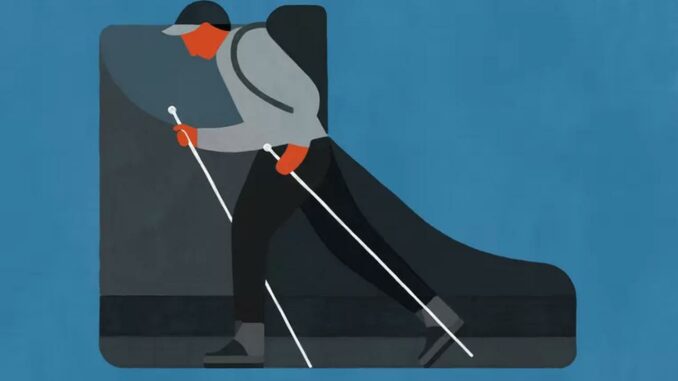
What’s the best way to go about finding the best hiking shoes or right hiking boot for me?
During the Four Days Marches, every walker is aware that wearing footwear is not recommended. But how can you know whether you’re getting an excellent pair of walking shoes?
To put it another way, it was nearly hard to find good quality walking shoes during the reign of Queen Corona. Best hiking shoes or boots have never been more difficult to get, whether it’s on the internet or at a reputable outdoor sporting goods retailer.
Which is why hiking shoes are divided into four groups, making it easier to make a decision. High-stability mountain shoe (B) for heavy alpine work from low-flexibility hiking shoe (A) (D). “The shoe we sell the most is the AB category,” explains Zwerfkei Buitensport shoe specialist Max Versteeg.
Dutch nature may be explored in this soft semi-high shoe while yet allowing for a somewhat strenuous mountain trek. At a specialized retailer, that shoe will cost you no more than 200 euros, making it the most expensive item in your backpacking kit.
What are you going to do with the best hiking shoes?
So, the first piece of advice is to consider how you want to utilize the shoe. To quote Versteeg: “If you live in the Netherlands and prefer to stroll on the road, skipping the mountain boots is a bad idea. The mountain shoe’s less flexible sole is particularly vulnerable to damage from asphalt.” Conversely, if you want to trek over the mountains with a tent and a bag, you should avoid light, flexible shoes.
Running shoes are excellent at absorbing stress, but they are not sturdy enough to walk for long periods of time without discomfort. For example, the counter of the hiking shoe: De Kuip in the shoe that encloses the heel, is missing from the list. No firm midsole to give stability is included in these shoes.
According to Versteeg, the Dutch are more prone to wear overshoes than undershoes in the highlands. “We choose heavy, durable footwear, whereas mountain dwellers prefer trail running footwear (for competitions on unpaved surfaces, ed.). Extra stability is appropriate because we aren’t used to climbing in the highlands.”
Buy online or at a brick and mortar store?
Jan Schutrups, a podiatrist and proprietor of Schutrups Shoes in Exloo in Drenthe, states that “the fit of a walking shoe is something personal and not quantitative.” “Customers are encouraged to have a look at themselves. If you have thin hands and feet, it’s a safe bet that you’ll have thin legs, too. The foot’s anatomical structure is a key player.”
Schutrups stresses the need of taking a foot measurement. “The length might vary from foot to foot, and the anatomy of your foot changes with time. Hormonal changes, for example, might cause the 106 bands in your foot to loosen. When looking for shoes, keep in mind the width of your feet as well.
The big toe of the shoe should not contact the front of the shoe when riding downhill, which is something that we stress to all of our clients.” A broader shoe than the consumer expects is always the best recommendation for a pair of walking shoes “Because your feet expand as you walk, you really need that extra room. You are protected, but if the shoe is too tight, you become an unnatural shell.”
Is it waterproof or sweat-free?
Even today, deciding whether or not to purchase a pair of waterproof shoes might be a challenge. Gore-Tex or similar water-resistant material can be found in a variety of shoes. However, because waterproof and breathable materials do not mix well, a shoe like that may cause you to perspire.
To be able to walk over glaciers or through high, wet grass, “shoes of the C and D categories are always fitted with gore-tex, ” adds Zwerfkei’s Max Versteeg. For a summer event like the Four Days Marches, he suggests an open-toed shoe. Every day, your foot creates the equivalent of two shot glasses’ worth of fluid, according to Jan Schutrups.
Is it possible to make it more environmentally friendly?
Genuine climbing boots are still made mostly of leather. Using a QR code, you may find out which mountain pasture Meindl’s organic cows have grazed on.
In terms of ’emotional durability,’ a hiking or mountaineering shoe generally comes out on top: you form a link with your shoes and don’t want to part with them easily. When the sole is showing significant wear, repair is the only option. As a result, the old-fashioned shoemaker has returned to the scene. Cambreur, a specialty shoemaker’s store in Elim, Drenthe, is a popular stop for many mountain climbers. As a result of Willem’s and Ricardo’s sterling work, Ricardo has earned the title “Europameister” in the field of shoe repair.
What’s your final piece of advice?
Don’t scrimp on the socks. Merino wool is the best option since it is light, warm, and breathable. Cotton is not suggested. These socks are recommended because they are anatomically formed, which reduces the risk of friction. Because of the blister, friction is hiking’s biggest enemy.

Be the first to comment